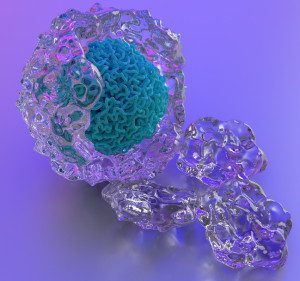

Since its inception in 1988 by the World Health Organization, the poliovirus eradication program has relied on the use of the infectious, attenuated vaccine strains produced by Albert Sabin. These viruses are taken orally, replicate in the intestine, and induce protective immunity. During replication in the gut, the Sabin strains lose the mutations that prevent them from causing paralysis. Nearly every individual who receives the Sabin vaccine strains excretes so-called vaccine-derived polioviruses (VDPVs) which are known to have caused outbreaks of poliomyelitis in under-immunized populations.
Immunocompromised individuals who produce very low levels of antibodies (a condition called agammaglobulinemia) are known to excrete VDPVs for very long periods of time – years, compared with months in healthy individuals. Seventy-three such cases have been described since 1962. These individuals receive the Sabin vaccine in the first year of life, before they are known to have an immunodeficiency, at which time they must receive antibodies to prevent them from acquiring fatal infections.
The most recently described immunocompromised patient was found to excrete poliovirus type 2 vaccine for 28 years (the time period is determined by combining the known rate of change in the poliovirus genome with sequence data on viruses obtained from the patient). The VDPV is neurovirulent (causes paralysis in a mouse model), antigenically drifted, and excreted in the stool at high levels.
Because the polio eradication plan calls for cessation of vaccination at some future time, these immunocompromised poliovirus shedders pose a threat to future unimmunized individuals. The global number of such patients is unknown, and there is no available therapy to treat them – administration of antibodies does not clear the infection. The development of antivirals that could eliminate the chronic poliovirus infection is clearly needed (and ongoing). It will also be necessary to conduct environmental surveillance for the presence of VDPVs – they can be identified by properties that distinguish them from VDPVs produced by immunocompetent vaccine recipients.
While the WHO eradication plan now includes a shift to using inactivated (Salk) poliovaccine, this strategy would not impact the existing immunocompromised poliovirus shedders. Should a VDPV from these individuals cause an outbreak of polio in the post-vaccine era, it will be necessary to control the outbreak with Salk vaccine, or an infectious poliovirus vaccine that cannot revert to virulence during replication in the intestine. Polioviruses with a recoded genome are candidates for the latter type of vaccine.
Image credit: Jason Roberts

Why was the Sabin vaccine used for so long, given similar efficacy, but higher risks vs the Salk vaccine?
Pingback: Shedding poliovirus for 28 years | Dengue and o...
typical. Blame the victim and label the persons a problem not the vaccine.
Chronic excretors, holy cow.
Nicely put.